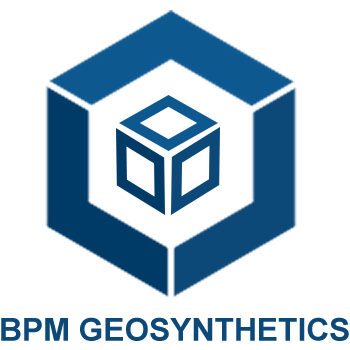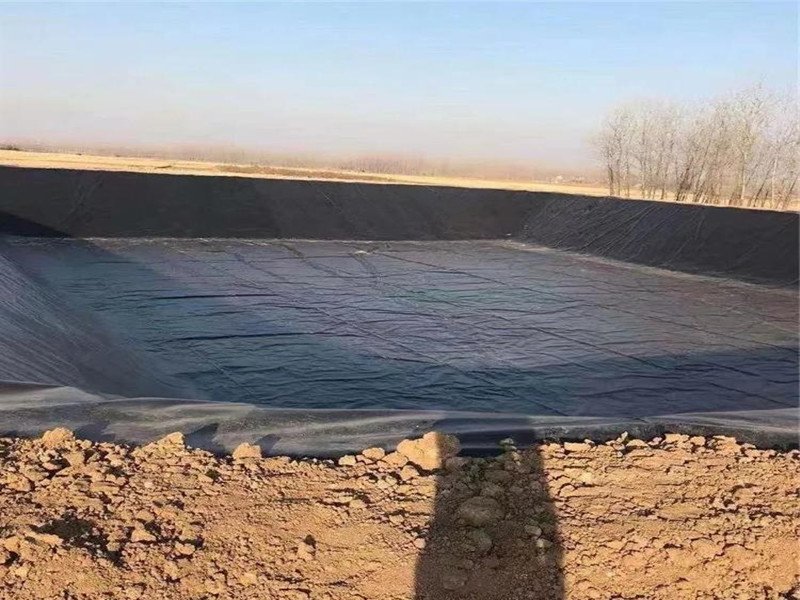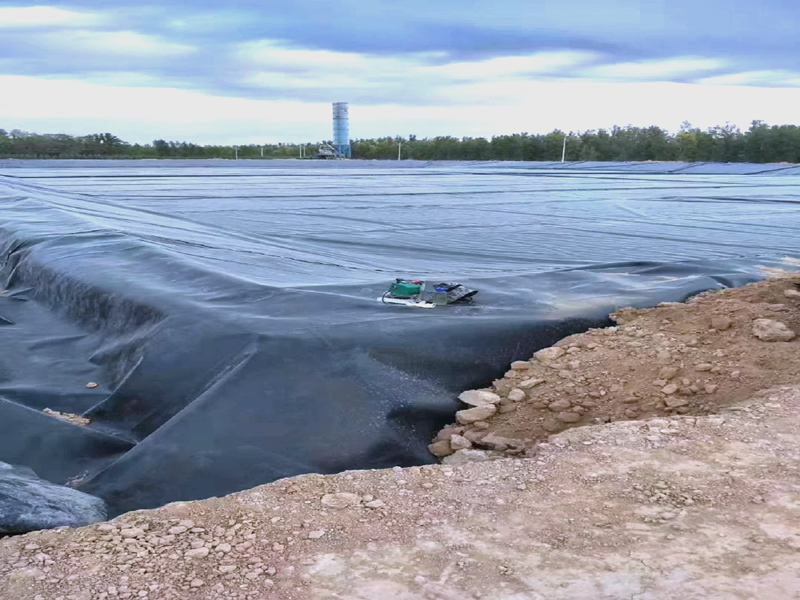
HDPE geomembrane liners are engineered synthetic membranes designed to provide impermeable barriers in various industrial, environmental, and civil engineering applications. These liners are made from high-density polyethylene, a thermoplastic polymer known for its strength, flexibility, and resistance to chemicals and environmental stressors. With a global market size for geomembranes projected to reach $4.5 billion by 2027, growing at a CAGR of 5.1% from 2020 (according to Allied Market Research), HDPE geomembranes are a cornerstone of modern infrastructure projects. This article explores top seven applications, supported by data and detailed insights.
HDPE Geomembrane Liner is a low-permeability synthetic liner, typically ranging in thickness from 0.2mm to 3.0 mm, used to control fluid or gas migration in a project or system. Manufactured through extrusion or calendering processes, HDPE geomembrane liners are composed of polyethylene resins combined with additives like carbon black for UV resistance and antioxidants for longevity.
2. What Are Benefits of HDPE Geomembrane Liner?
HDPE geomembranes offer numerous advantages, driving their widespread adoption across industries:
2.1 Environmental Protection
They prevent contamination of soil and groundwater by containing hazardous substances. For example, in landfill applications, HDPE liners reduce leachate seepage by 99.9% compared to unlined systems.
2.2 Cost-Effectiveness
With installation costs ranging from $2 to $5 per square meter (depending on thickness and site conditions), HDPE liners are more economical than alternatives like concrete or clay liners.
2.3 Longevity
UV-stabilized HDPE geomembranes can withstand 20+ years of direct sunlight exposure, reducing replacement costs.
2.4 Ease of Installation
Large rolls (up to 8 meters wide) and heat-welding techniques enable rapid deployment, with installation rates of 5,000–10,000 square meters per day on large projects.
2.5 Versatility
Suitable for diverse climates, from Arctic conditions (-40°C) to tropical environments (+60°C), due to their thermal stability.
These benefits make HDPE geomembranes indispensable for projects prioritizing safety, sustainability, and efficiency.
3.Top 7 Applications of HDPE Geomembrane Liners

3.1 Landfills and Leachate Ponds
HDPE geomembranes, typically 1.5–2.0mm thick, serve as primary and secondary liners to prevent leakage. According to the Geosynthetic Research Institute, these liners reduce leachate seepage to less than 0.1 liters per hectare per day. When used as landfill caps, they also decrease rainwater infiltration by up to 95% and manage methane emissions, aiding compliance with regulations like the U.S. Resource Conservation and Recovery Act (RCRA).
3.2 Wastewater Treatment Ponds
Global wastewater treatment capacity is expected to grow by 8.5% annually through 2030, driven by urbanization and stricter regulations (Global Water Intelligence). HDPE geomembranes line containment ponds, lagoons, and aeration basins, preventing untreated wastewater from seeping into the environment. A 1.0 mm HDPE liner can withstand pH levels from 2 to 12 and chemical concentrations up to 10%, making it ideal for municipal and industrial facilities. For instance, a 100,000 m² lagoon lined with HDPE can treat 1 million gallons of wastewater daily without leakage.
3.3 Mining and Tailings Management
The mining industry, valued at $2.4 trillion globally (Statista, 2024), relies on heap leaching to extract metals like gold (50% of global production) and copper (20%). In the mining industry, HDPE geomembranes as well as BPM Geosynthetics Geomembranes serve as liners for tailings dams and containment ponds, preventing the release of hazardous chemicals and pollutants into the environment. These liners ensure the safe containment and management of mining by-products, reducing the risk of soil and water contamination.
3.4 Agricultural Pond and Canal Linings
Agriculture accounts for 70% of global freshwater use (FAO, 2023), and water loss through seepage in unlined canals can exceed 30%. HDPE geomembranes, often 0.75–1.5 mm thick, line irrigation canals and storage ponds, reducing seepage losses to less than 1%.These liners help conserve water resources, improve irrigation efficiency, and support sustainable agricultural practices.
3.5 Oil and Gas Containment
The oil and gas industry, with global revenues of $5 trillion in 2024 (IBISWorld), requires robust containment for spills and leaks. HDPE geomembranes (1.5–2.0 mm) are used in secondary containment systems around storage tanks, pipelines, and fracking sites. They resist hydrocarbons and drilling fluids, with a chemical compatibility rating of A for crude oil (per ASTM D543). A single 1,000 m² HDPE liner can contain up to 500,000 liters of spilled fluid, protecting ecosystems in high-risk areas like the Permian Basin.
3.6 Stormwater Management Systems
Urban stormwater runoff, carrying pollutants like oil and heavy metals, contributes to 80% of water quality impairments in U.S. rivers (EPA, 2023). HDPE geomembranes line retention and detention ponds, ensuring controlled drainage and preventing soil erosion. A 0.75 mm HDPE liner can handle 10,000 m³ of runoff per storm event, supporting sustainable urban planning. Projects like Singapore’s Marina Barrage use HDPE liners to manage 1.2 million m³ of stormwater annually, reducing flood risks.
3.7 Decorative and Recreational Water Features
The global market for artificial water features is valued at $1.8 billion (Market Research Future, 2024), driven by demand for aesthetic landscapes. HDPE geomembranes (0.5–1.0 mm) line decorative ponds, golf course water hazards, and recreational lakes, ensuring water retention and preventing soil contamination. Their flexibility allows conformity to complex shapes, with installation costs as low as $1.50 per m² for small projects.

Conclusion
HDPE geomembrane liners are critical to modern infrastructure, offering unmatched impermeability, durability, and versatility. From protecting groundwater in landfills to conserving water in agriculture, their applications address pressing environmental and industrial challenges. With a proven track record—supported by data showing 99.9% containment efficiency and 50+ year lifespans—HDPE geomembranes are a sustainable, cost-effective solution for a wide range of projects. As global demand for environmental protection and resource management grows, these liners will continue to play a pivotal role in shaping a safer, more sustainable future.



